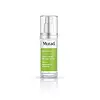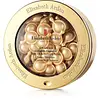What's inside
What's inside
 Key Ingredients
Key Ingredients

 Benefits
Benefits

 Concerns
Concerns

 Ingredients Side-by-side
Ingredients Side-by-side

Water
Skin ConditioningCyclopentasiloxane
EmollientIsopropyl Palmitate
EmollientC14-22 Alcohols
Emulsion StabilisingPolymethylsilsesquioxane
Dimethicone
EmollientPropanediol
SolventGlyceryl Stearate
EmollientPEG-100 Stearate
Shea Butter Ethyl Esters
EmollientRetinol
Skin ConditioningHydroxypinacolone Retinoate
Skin ConditioningCeramide NP
Skin ConditioningSodium Hyaluronate
HumectantSolanum Lycopersicum Fruit Extract
AntioxidantSwertia Chirata Extract
HumectantSqualane
EmollientPunica Granatum Extract
AstringentTocopheryl Acetate
AntioxidantGlycine Soja Extract
Skin ConditioningUrea
BufferingYeast Amino Acids
HumectantTrehalose
HumectantInositol
HumectantTaurine
BufferingBetaine
HumectantGlycerin
HumectantCaprylic/Capric Triglyceride
MaskingDimethyl Isosorbide
SolventSilica
AbrasiveEthylhexyl Palmitate
EmollientSilica Dimethyl Silylate
EmollientButylene Glycol
HumectantLecithin
EmollientAmmonium Acryloyldimethyltaurate/Vp Copolymer
C12-20 Alkyl Glucoside
EmulsifyingCetyl Palmitate
EmollientLaureth-23
CleansingPolysorbate 20
EmulsifyingTrideceth-6 Phosphate
EmulsifyingSynthetic Fluorphlogopite
Phenoxyethanol
PreservativeEthylhexylglycerin
Skin ConditioningChlorphenesin
AntimicrobialDisodium EDTA
Sodium Hydroxide
BufferingTris(Tetramethylhydroxypiperidinol)Citrate
StabilisingSodium Benzotriazolyl Butylphenol Sulfonate
UV AbsorberCI 77891
Cosmetic ColorantCI 14700
Cosmetic ColorantAlpha-Isomethyl Ionone
PerfumingCitronellol
PerfumingParfum
MaskingWater, Cyclopentasiloxane, Isopropyl Palmitate, C14-22 Alcohols, Polymethylsilsesquioxane, Dimethicone, Propanediol, Glyceryl Stearate, PEG-100 Stearate, Shea Butter Ethyl Esters, Retinol, Hydroxypinacolone Retinoate, Ceramide NP, Sodium Hyaluronate, Solanum Lycopersicum Fruit Extract, Swertia Chirata Extract, Squalane, Punica Granatum Extract, Tocopheryl Acetate, Glycine Soja Extract, Urea, Yeast Amino Acids, Trehalose, Inositol, Taurine, Betaine, Glycerin, Caprylic/Capric Triglyceride, Dimethyl Isosorbide, Silica, Ethylhexyl Palmitate, Silica Dimethyl Silylate, Butylene Glycol, Lecithin, Ammonium Acryloyldimethyltaurate/Vp Copolymer, C12-20 Alkyl Glucoside, Cetyl Palmitate, Laureth-23, Polysorbate 20, Trideceth-6 Phosphate, Synthetic Fluorphlogopite, Phenoxyethanol, Ethylhexylglycerin, Chlorphenesin, Disodium EDTA, Sodium Hydroxide, Tris(Tetramethylhydroxypiperidinol)Citrate, Sodium Benzotriazolyl Butylphenol Sulfonate, CI 77891, CI 14700, Alpha-Isomethyl Ionone, Citronellol, Parfum
Isononyl Isononanoate
EmollientIsodecyl Neopentanoate
EmollientIsododecane
EmollientIsopropyl Myristate
EmollientDimethicone
EmollientCamellia Japonica Seed Oil
EmollientDivinyldimethicone/Dimethicone Copolymer
Dimethicone Crosspolymer
Emulsion StabilisingCaprylic Acid
CleansingCaprylic/Capric Triglyceride
MaskingCeramide EOP
Skin ConditioningCeramide NP
Skin ConditioningCeramide AP
Skin ConditioningCholesterol
EmollientCocos Nucifera Oil
MaskingCrithmum Maritimum Extract
Skin ConditioningLinoleic Acid
CleansingLinolenic Acid
CleansingMedicago Sativa Extract
TonicPhytosphingosine
Skin ConditioningRetinyl Palmitate
Skin ConditioningSqualene
EmollientTocopherol
AntioxidantIsononyl Isononanoate, Isodecyl Neopentanoate, Isododecane, Isopropyl Myristate, Dimethicone, Camellia Japonica Seed Oil, Divinyldimethicone/Dimethicone Copolymer, Dimethicone Crosspolymer, Caprylic Acid, Caprylic/Capric Triglyceride, Ceramide EOP, Ceramide NP, Ceramide AP, Cholesterol, Cocos Nucifera Oil, Crithmum Maritimum Extract, Linoleic Acid, Linolenic Acid, Medicago Sativa Extract, Phytosphingosine, Retinyl Palmitate, Squalene, Tocopherol
 Reviews
Reviews

Alternatives
Ingredients Explained
These ingredients are found in both products.
Ingredients higher up in an ingredient list are typically present in a larger amount.
This ingredient is an emollient, solvent, and texture enhancer. It is considered a skin-softener by helping the skin prevent moisture loss.
It helps thicken a product's formula and makes it easier to spread by dissolving clumping compounds.
Caprylic Triglyceride is made by combining glycerin with coconut oil, forming a clear liquid.
While there is an assumption Caprylic Triglyceride can clog pores due to it being derived from coconut oil, there is no research supporting this.
Learn more about Caprylic/Capric TriglycerideCeramide NP is a type of ceramide and formally known as ceramide 3.
Ceramides are intercellular lipids naturally found in our skin that bonds dead skin cells together to create a barrier. They are known for their ability to hold water and thus are a great ingredient for dry skin.
Ceramides are an important building block for our skin barrier. A stronger barrier helps the skin look more firm and hydrated. By bolstering the skin ceramides act as a barrier against irritating ingredients. This can help with inflammation as well.
If you would like to eat ceramides, sweet potatoes contain a small amount.
Read more about other common types of ceramides here:
Ceramide AP
Ceramide EOP
Dimethicone is a type of synthetic silicone created from natural materials such as quartz.
What it does:
Dimethicone comes in different viscosities:
Depending on the viscosity, dimethicone has different properties.
Ingredients lists don't always show which type is used, so we recommend reaching out to the brand if you have questions about the viscosity.
This ingredient is unlikely to cause irritation because it does not get absorbed into skin. However, people with silicone allergies should be careful about using this ingredient.
Note: Dimethicone may contribute to pilling. This is because it is not oil or water soluble, so pilling may occur when layered with products. When mixed with heavy oils in a formula, the outcome is also quite greasy.
Learn more about Dimethicone